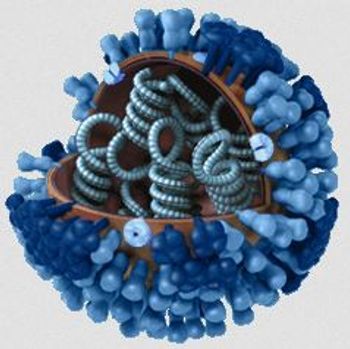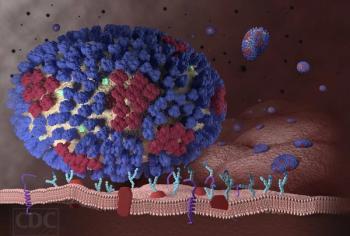
According to the Centers for Disease Control and Prevention (CDC), most US children aged 6 to 18 years consume more than the daily recommended amount of less than 2300 mg sodium.

According to the Centers for Disease Control and Prevention (CDC), most US children aged 6 to 18 years consume more than the daily recommended amount of less than 2300 mg sodium.

An expert panel of specialists from the National Heart, Lung, and Blood Institute has issued new guidelines for the management and treatment of sickle cell disease (SCD). How will these latest evidence-based recommendations affect the care of your patients?

The Advisory Committee on Immunization Practices (ACIP) has updated its influenza vaccination recommendations for the 2014-15 influenza season.

Although pediatric cancers are rare and the rate for all childhood and adolescent cancers combined has remained stable from 2000 to 2009, a new study reveals that 2 children’s cancers appear to have increased rates of diagnoses.

After years of knowing that obesity and asthma had some connection, but not whether obesity brought about asthma or vice versa, new evidence may finally hold the answer.

Previous research has shown that the practice of allowing youngsters to taste or sip alcohol is associated with their parents’ attitudes toward acceptance of drinking and alcohol use. Now a new study examines whether children who sip alcohol at an early age progress to early-onset drinking and other negative behaviors in adolescence and young adulthood.

Video playlist on prenatal genetic testing, screening, and diagnosis, featuring speakers Joan A. Scott, Dennis Lo, Jane Cheuh, and Mary E. Norton.

Your answer to the question in this case will hinge on what you know about the influenza strains in the 2014-2015 vaccine vs those in the 2013-2014 formulation. See what you think.

The Advisory Committee on Immunization Practices has just published its official recommendations for the 2014-2015 influenza season. How do the updated guidelines apply to this potential office situation?

Physicians may be missing a chance to prevent tobacco use among adolescents by not discouraging the use of tobacco products or advising patients against smoking during annual visits, according to a recent study.

How vaccines are presented to parents can increase their intention to vaccinate their children, according to a recent study on emphasizing the benefits of the measles-mumps-rubella (MMR) vaccine to parents.

Despite overwhelming information on the benefits of sunscreen and the harms of tanning, the number of high school students using sunscreen has been on the decline since 2001 while the number using tanning devices has risen in prevalence, according to data from the Centers for Disease Control and Prevention.

Watch to learn about the flu season and it's impact on younger adults with the H1N1 strain of the flu virus and how important the flu vaccine is for this part of the population.

See videos that are part of the multimedia publication Reaching Teens: Strength-based…, Edited by Kenneth R. Ginsburg, MD, MS Ed, FAAP, FSAHM and Sara B. Kinsman, MD, PhD. Copyright © 2014 American Academy of Pediatrics

Michael Banks, MD, discusses a study published in Pediatrics, which concludes that DHA in high doses reduced the risk for hey fever in male toddlers who were born prematurely. Video provided by The Doctor's Channel.

When should a young child’s fracture raise suspicion for abuse and prompt an order for a skeletal survey (SS), a series of about 20 radiographs?

As rotavirus vaccine coverage increased from 2009 to 2011, diarrhea-associated healthcare utilization and costs continued the decline that began after the pentavalent rotavirus vaccine (RV5) and the monovalent vaccine (RV1) joined the recommended vaccine list in 2006 and 2008, respectively.

A recent study in Massachusetts schools looks at whether or not school nursing services can save money.

Although some proponents of electronic cigarettes (e-cigarettes) suggest that they may be effective as smoking cessation aids, use of e-cigarettes may actually encourage conventional cigarette use among adolescents.

The American Academy of Pediatrics (AAP) Florida Chapter and others plan to appeal the recent federal court decision that approves a Florida "gag" law restricting physician counseling and medical record notation about firearm ownership or presence in the home of a patient.

Although pediatricians enjoy caring for patients, there is no disputing the fact that a medical practice is a business that must be run efficiently and profitably.

You are asked to see a healthy 3-month-old boy with a rapidly growing lump on his left upper eyelid.

In the mid-1990s, David Monroe, MD, a pediatrician in Columbia, Maryland, remembers having to admit children with common diagnoses such as appendicitis, asthma, and pneumonia to hospitals 30 or more miles away. That was because Howard County General Hospital, the community hospital in Columbia, was struggling to maintain pediatric inpatient care.

Early phase pediatric cancer trials offer hope to children whose cancer defies standard therapy.

Classifying malignant tumors has typically relied on pathologic criteria from the tissue site of origin with histologic and other clinical characteristics of the tumor determining the target and type of therapeutic intervention. This approach to classifying cancer, however, is slowly being rethought.

Whereas the incidence of cancer among kids is increasing, death from childhood cancer is decreasing.

Readers respond to "Maintenance of Certification: Myths, facts, and FAQs" and raise questions about HIPAA compliance and SurveyMonkey.

Dr Anne Schuchat, Assistant Surgeon General and Director of the Centers for Disease Control and Prevention's (CDC) National Center for Immunization and Respiratory Diseases, discusses the recent CDC report on declining humanpapillomavirus vaccine rates in adolescents.

In the 30 years since the first issue of Contemporary Pediatrics, the mortality rate for all pediatric cancers combined has declined by more than 50%.

Food has joined the list of allergies for which inner-city children are at higher risk, according to a recent study, which found that at least 1 in 10 young children from 4 large cities had an allergy to peanuts, eggs, or milk.